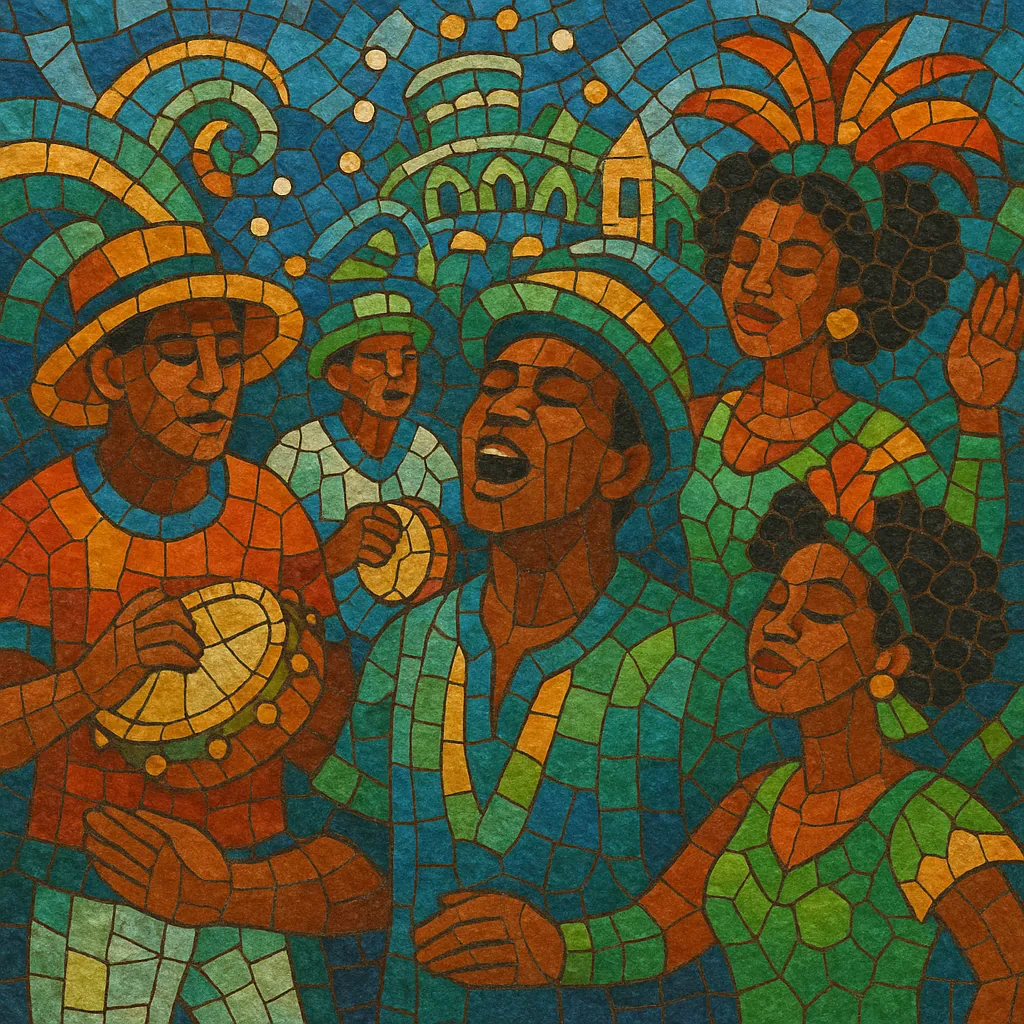Samba-enredo is the narrative, theme-based branch of samba written expressly for Brazil’s Rio-style carnaval parades. Each song (the enredo) tells the year’s official storyline chosen by a samba school, meant to guide the floats, costumes, and choreography through a cohesive spectacle.
Musically, it keeps the propulsive 2/4 samba groove at an energized parade tempo, led by a large bateria (percussion ensemble) and a lead singer (puxador) trading calls with a powerful community chorus. Harmonies are generally diatonic with bright, singable refrains designed for mass participation and stadium-scale impact.
Beyond entertainment, sambas-enredo function as public storytelling—celebrating Afro-Brazilian culture, historical figures, cities, myths, and social themes—turning the parade avenue into a moving stage for musical pageantry.
Samba-enredo emerged in Rio de Janeiro as samba schools formalized annual carnaval parades. By the early 1930s, schools began selecting an enredo (theme) and commissioning a dedicated samba to narrate it, aligning music with floats, costumes, and choreography. The basic ingredients—samba’s 2/4 swing, choro-influenced harmony, and communal singing—were adapted into a theatrical, processional format.
As competitions intensified, the genre’s structure stabilized: an introduction leading to memorable refrains, sectional verses that unfold the theme, and call-and-response for mass participation. Iconic composers such as Silas de Oliveira and Mano Décio da Viola (often tied to Portela and Império Serrano) helped define its poetic, historically minded style. Baterias expanded and codified their instrumentation (surdos, caixas, repiniques, tamborins, agogôs, chocalhos, cuícas) and performance cues (apito/whistle signals).
The rise of the Sambódromo (mid-1980s) and national TV coverage magnified the genre’s scale. Star interpreters (puxadores) such as Jamelão (Mangueira) and Neguinho da Beija-Flor brought operatic projection and charisma. Refrains became more anthemic to energize tens of thousands of voices, while lyrics increasingly mixed historical research with poetic imagery and civic pride.
Modern sambas-enredo balance tradition with polish: tighter arrangements, strategic key changes, and sectional contrasts designed to support choreography and float timing. Community “disputas de samba” (song competitions) remain central to choosing each school’s official samba, sustaining a living tradition where composition, history-telling, and neighborhood identity meet.


